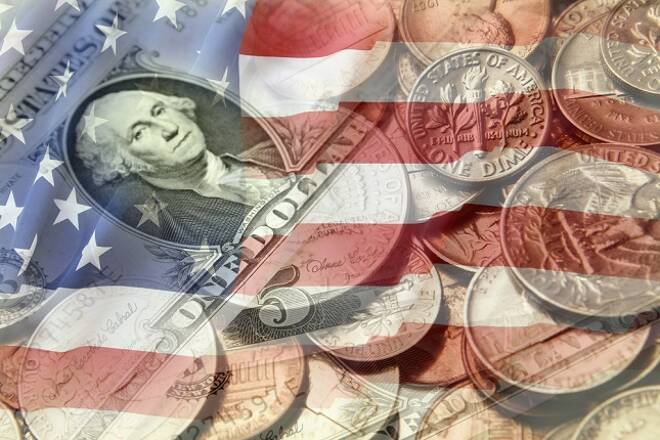Advertisement
Advertisement
US Economy’s Rocky Recovery Needs Fiscal Stimulus Jolt
By:
With the effects of the first rounds of fiscal stimulus fading, and coronavirus cases rising, there is risk of secondary recession without fiscal aid.
Progress towards a U.S. stimulus deal has boasted sentiment in world markets all week. Although it seems Washington politicians have been treating the new fiscal stimulus package as another weapon to divide the Republican and Democratic parties as well as voters, independent Federal Reserve policymakers see it as a necessity to smooth out a rocky recovery and lift some of the uncertainty being fueled by another resurgence in COVID-19 cases.
US Economy’s Recovering Slowly, But Some Sectors Struggling – Fed Survey
The Federal Reserve said on Wednesday the U.S. economy continued to recover at a slight to modest pace through early October as consumers bought homes and increased spending, but the picture varied greatly from sector to sector.
The Fed’s Beige Book report was decidedly more upbeat than the September version, with more districts using the words “positive” and “optimistic” to describe various aspects of their local economies.
Still, the Fed’s Beige Book pointed to the kind of uneven recovery that officials warn may become a more-or-less permanent state of affairs unless there is more federal relief.
Fed’s Brainard Calls for More Fiscal Aid for Economy
Despite a “heartening” bounce-back from the initial hit to the U.S. economy delivered by the COVID-19 pandemic, the recovery is uneven and uncertain and will require continued support to ensure it becomes broad-based and sustainable, Federal Reserve Governor Lael Brainard said on Wednesday.
The economy’s overall improvement, however, masks big disparities among sectors and among Americans that could hold back the recovery.
Brainard said the biggest risk to her outlook for recovery is that fiscal support from the federal government will be withdrawn too soon. It’s a view widely shared by her Fed colleagues. Talks on a new pandemic relief package are ongoing, but prospects remain dim for the Republican-controlled Senate to approve any aid before the November 3 election.
“This strong support from monetary policy – if combined with additional targeted fiscal support – can turn a K-shaped recovery into a broad-based and inclusive recovery that delivers better outcomes overall,” Brainard said.
“Premature withdrawal of fiscal support would risk allowing recessionary dynamics to become entrenched, holding back employment and spending, increasing scarring from extended unemployment spells, leading more businesses to shutter, and ultimately harming productive capacity,” Brainard said.
Fed Has Done Its Job
The recently adopted monetary policy strategy by the Federal Reserve ensures that policymakers will not tighten policy too soon. With the Fed pledging to keep rates at their current near-zero level for years and likely to raise them only gradually to keep rates at levels designed to stimulate economic growth, central bankers are doing their job to keep the recovery sustainable. But in order for the policy to work, the economy needs another jolt of fiscal stimulus, not unlike a booster-shot.
With the effects of the first rounds of fiscal stimulus fading, and coronavirus cases rising, there is risk of secondary recession without new financial aid from the government.
For a look at all of today’s economic events, check out our economic calendar.
About the Author
James Hyerczykauthor
James Hyerczyk is a U.S. based seasoned technical analyst and educator with over 40 years of experience in market analysis and trading, specializing in chart patterns and price movement. He is the author of two books on technical analysis and has a background in both futures and stock markets.
Advertisement
